We’d say dental floss is probably one of the most commonly avoided items in oral health care, despite being one of the most impressive defenses against gum disease and tooth decay. Here we explain the ins and outs of dental floss with our homage to this misunderstood, highly noble dental care tool.
What Is Dental Floss?
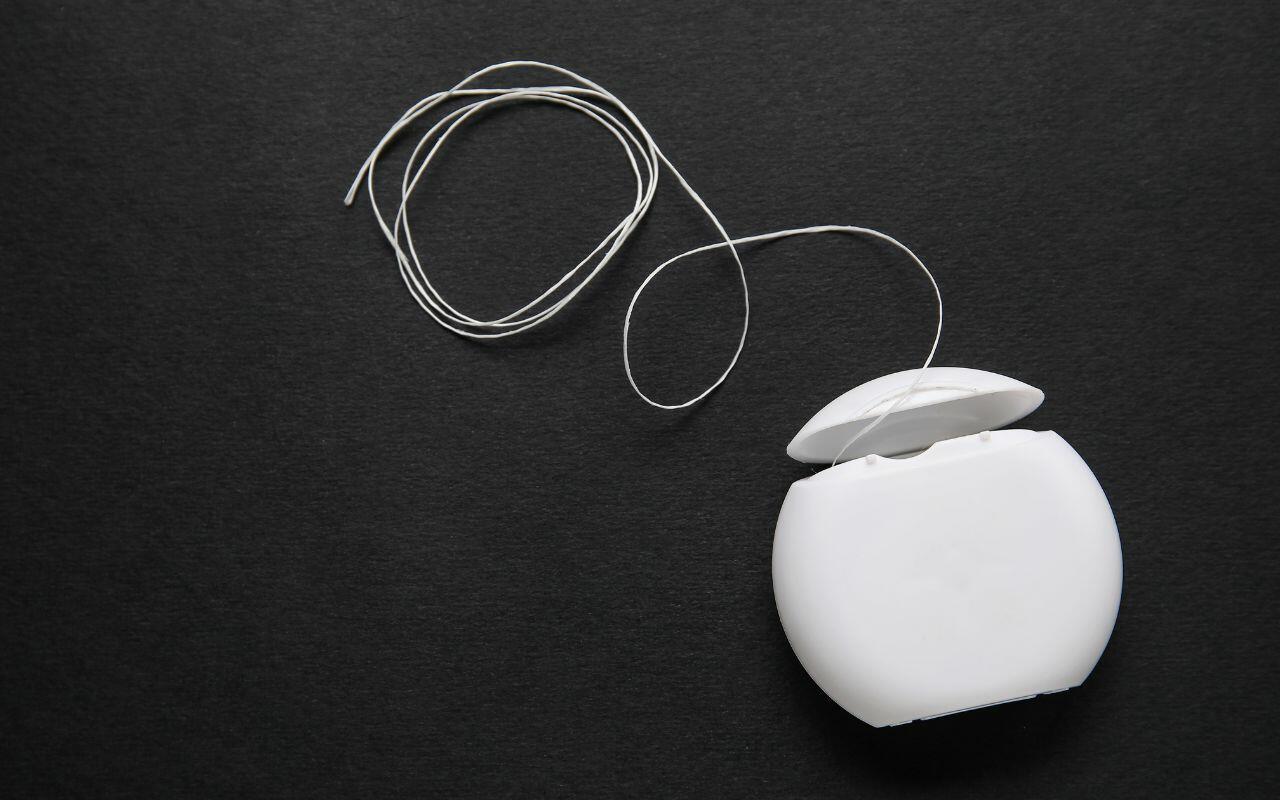
Dental floss is a thin string made of nylon filaments twisted together to create a strong thread. Sometimes coated with wax or minty flavouring, it is used to clean in between teeth and remove food and plaque. Although a toothbrush works well on exposed teeth surfaces, it can’t reach between teeth. Dental floss takes care of those tight spots, making it an essential tool in your oral hygiene tool kit.
How To Use Dental Floss
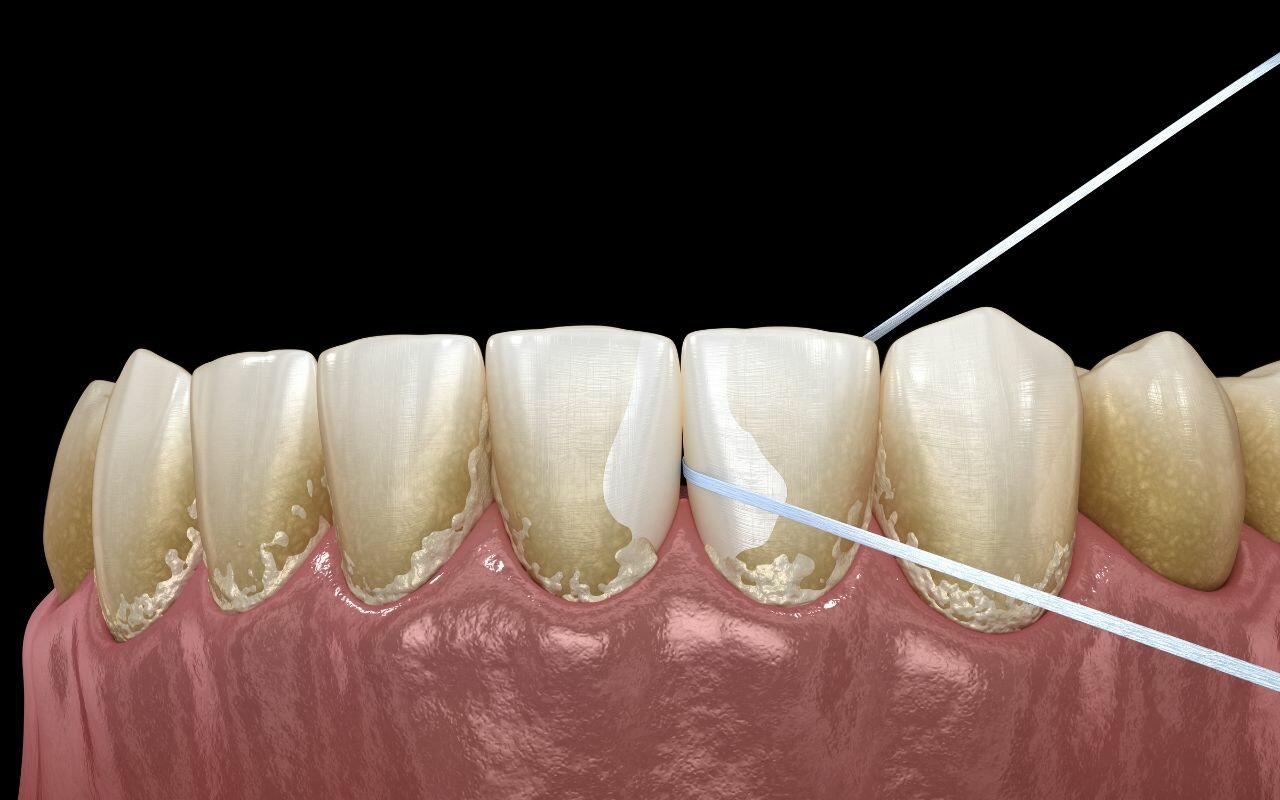
Here’s our guide to using dental floss like a pro:
Flossing 101
- Floss once a day, preferably at bedtime, to remove the debris and plaque buildup of the day.
- Floss before brushing as it removes plaque better and allows fluoride to stay between your teeth.
- Use floss instead of toothpicks whenever something is caught between your teeth
- Do not reuse pieces of dental floss as it has bacteria buildup you shouldn’t put back in your mouth. Also, the integrity of its strength is weakened once used.
- Ditto for not sharing dental floss!
- Use a long piece of floss of about 45 cm to provide more control and make it easier to reach your back teeth.
The reason you need so much floss is that you need to use a new section of floss for each tooth to avoid spreading bacteria from tooth to tooth.
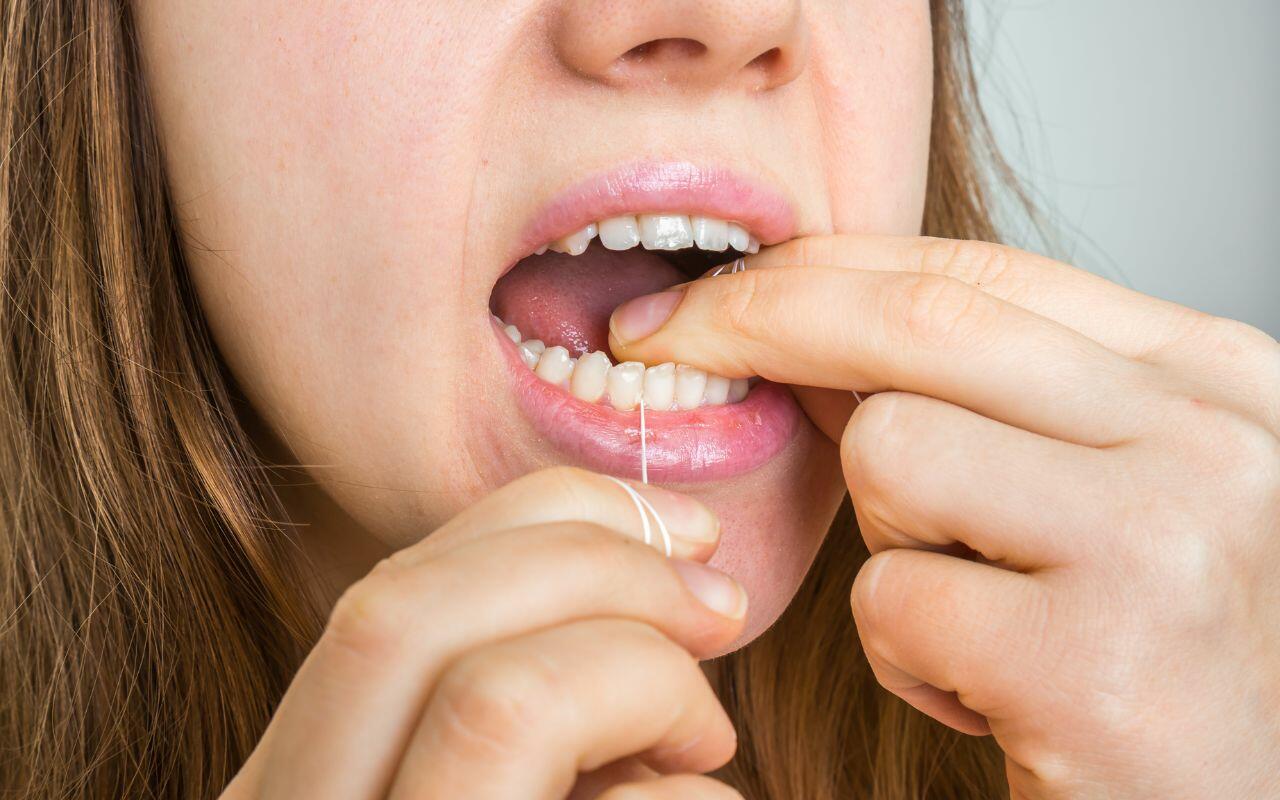
Best Flossing Technique
There are many rules about the best flossing technique, but realistically you need to find a way to hold the floss in a manner comfortable for you. The main goal, and most important thing, is to ensure you achieve consistent contact with the tooth surfaces to remove plaque. So, you need to:
- Wrap the floss around your fingers to secure it, and then insert it between your teeth.
- Gently slide the floss up and down against each side of the tooth.
- Then gently slide it between the gum and tooth. Do not force it.
- Follow a logical order so you don’t miss any teeth, working front to back and top to bottom, one side at a time.
Are There Alternatives To Dental Floss?
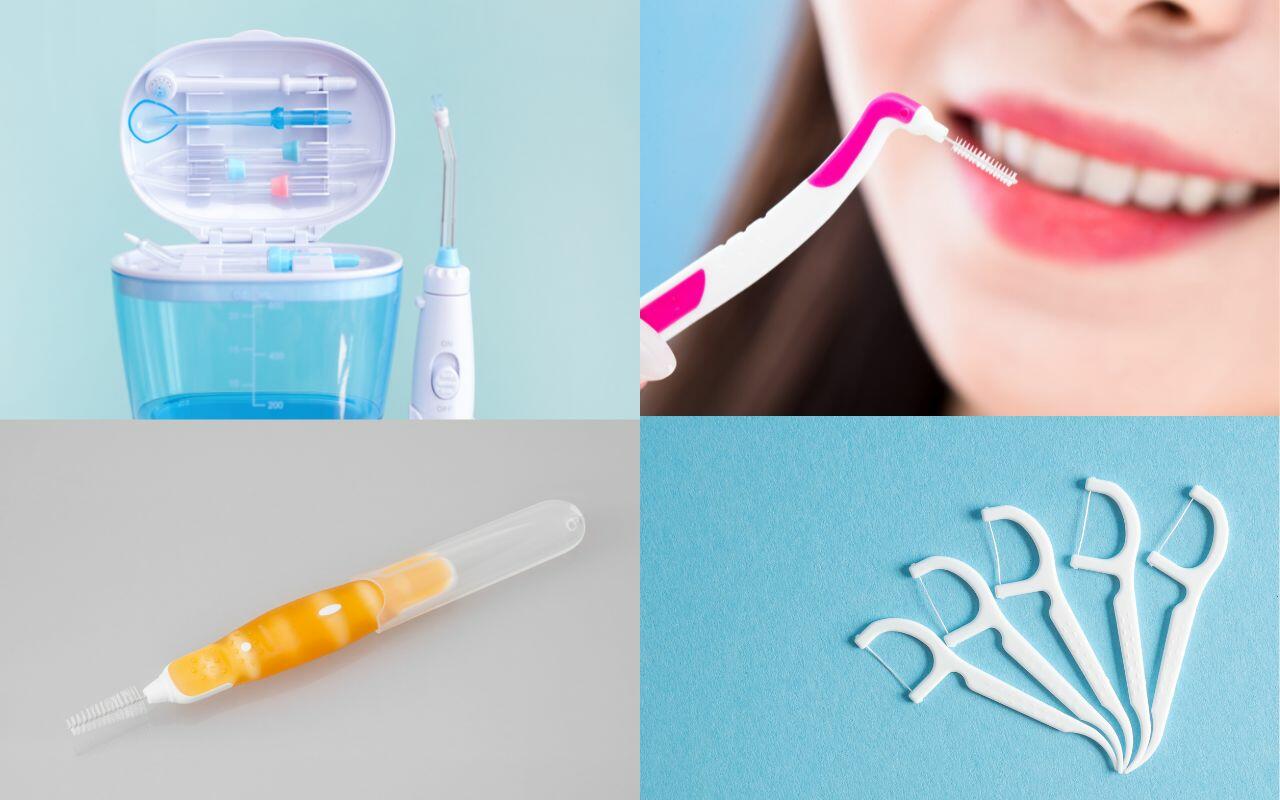
Yes – if you find flossing difficult or unpleasant, you have several other options:
Water flossing: This device sprays a steady stream of water between teeth to remove debris and plaque. It’s great for people with braces or bridges, but also if you have arthritis and can’t hold and manipulate the floss effectively. We recommend water flossing to anyone who hates flossing or just wants to take care of their teeth. It is safe and very effective for plaque removal.
Floss holders/Pre-threaded floss: Another great tool if you have difficulty holding floss or reaching all tooth surfaces is a floss holder. They come in both reusable and disposable options and allow you to floss without struggling with the string. Pre-threaded floss is the disposable version, with a small piece of floss stretched across a wood or plastic holder. Just keep in mind these options can increase the risk of spreading plaque and bacteria since you’re using the same little piece of floss for your entire mouth.
Interdental brushes: These tiny brushes are a lot like pipe cleaners on a tiny scale and can be reused when rinsed thoroughly. They come in different sizes to suit different-sized gaps between teeth. They are also ideal for people with braces.
Soft-Picks: Soft-Picks are like an interdental brush but made of disposable rubber tips. They are perfect for massaging gums and getting between teeth. However, they don’t do as good a job at removing plaque as other options.
Is Dental Floss Bad For The Environment?
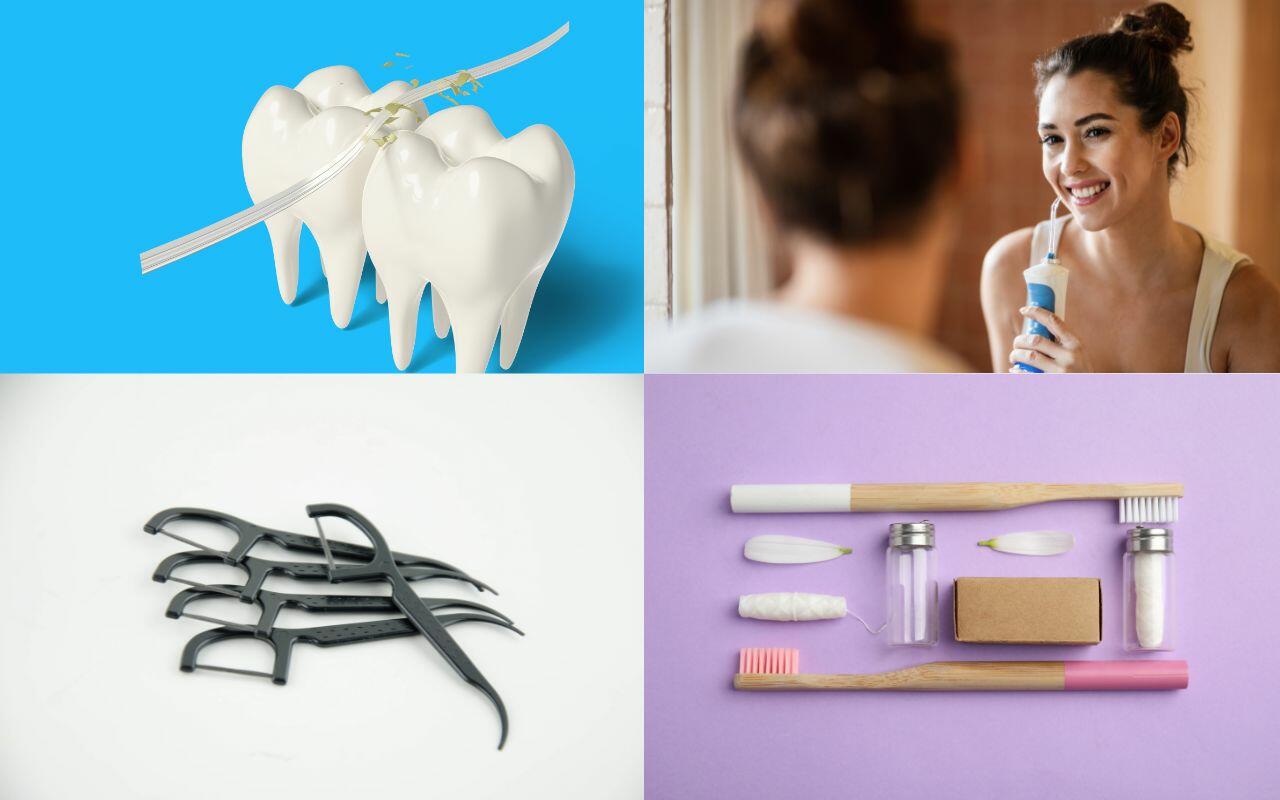
We find this a difficult question to answer because we care about both your teeth and the environment. However, if we’re being perfectly honest, traditional dental floss is not very good for the environment. Nylon is non-recyclable and non-biodegradable, and despite being tiny, it does contribute to landfill waste. If it gets into the local water systems, it also puts marine life at risk. There’s also the plastic packaging to contend with.
Although you have to take every step to support the planet, you can’t stop flossing. So, we are happy to share some natural, vegan alternatives:
- Corn floss: This plastic-free alternative is made from corn starch bioplastic and is coated with candelilla wax with a refreshing mint flavour. It is also refillable for a completely plastic-free solution.
- Bamboo floss: This sustainable material comes from the fastest-growing plant on the planet. Bamboo has the added benefit of antimicrobial properties, unlike some traditional flosses that can contain toxins.
- Plastic-free picks: Biodegradable, plastic-free picks are the best replacement if you don’t like floss.
- Water flossers: We’ve mentioned the benefits of the water flosser above. Making it even more attractive, it is an excellent low-waste option, although it does use more water than other floss options.
Fun Facts: What Else Can Dental Floss Be Used For?
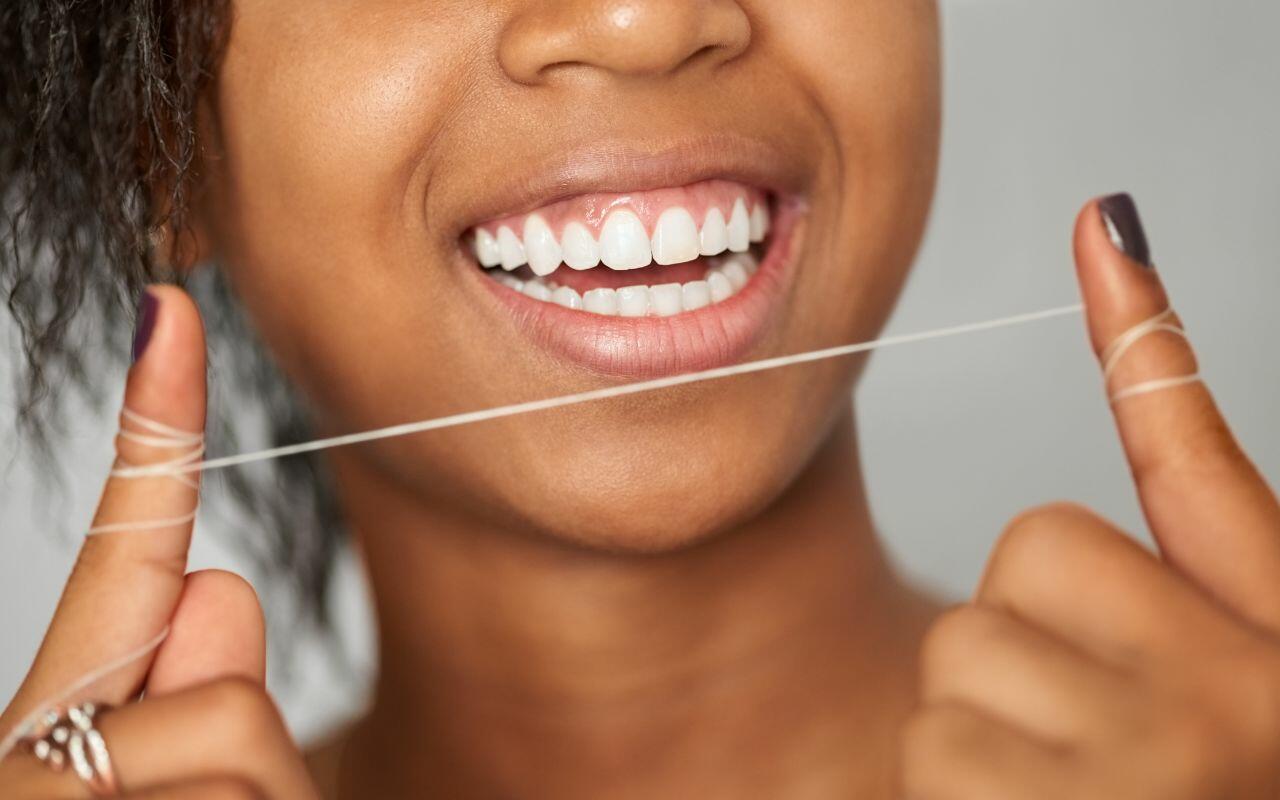
Floss has a lot of uses you might not be aware of, including:
- Removing small skin tags
- Helping to ease a stuck ring off your finger
- An alternative to wire for hanging pictures without scratching your walls
- Stitching holes on netting for items like laundry bags, beach bags, fish nets, and playpens
- To affix vines in the garden to trellises and supports
- An emergency thread when you lose a button (we’re assuming you always keep floss handy to remove food caught between your teeth)
- As a seal for leaky faucets wrapped around the cap
- Removing photos from old photo albums without ripping: Slide the floss gently between the album page and photo
- Cleaning between computer keys
- Getting into awkward spaces like between the countertop and stovetop
- For threading beads for jewellery
- To create even cake layers: Pull the floss taut on either side of the cake and ease it through
- As a twine to tie roasts and meats before cooking
- Stringing Christmas garland with cranberries and popcorn
These are just some of the many uses for highly diverse, sturdy dental floss.
No matter how else you use it, dental floss or flossing alternatives are an important part of a regular dental regime to keep your teeth and gums healthy between dental checkups and cleanings.
Call today to schedule an appointment at 905-775-5307, or click here to request an appointment.
